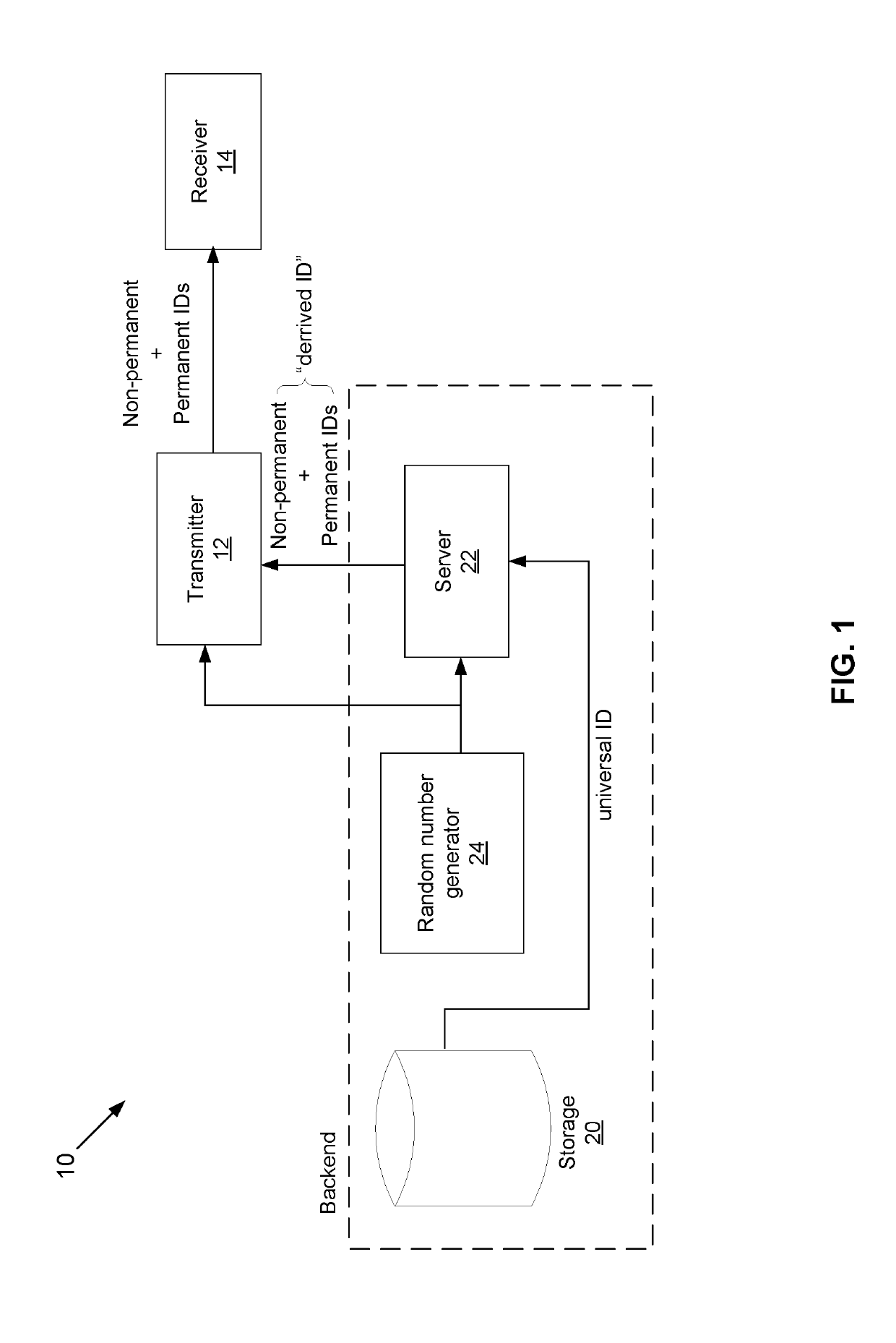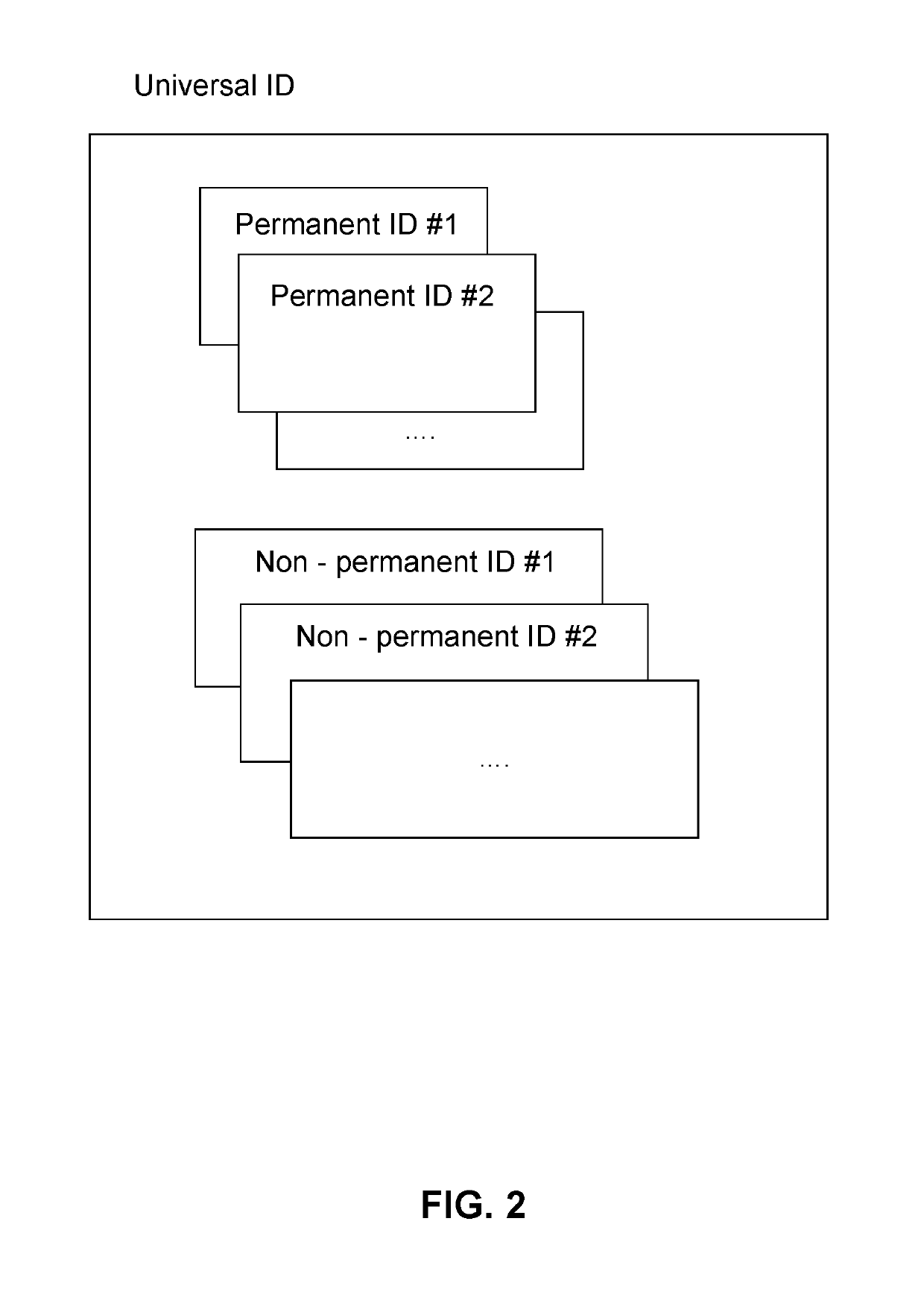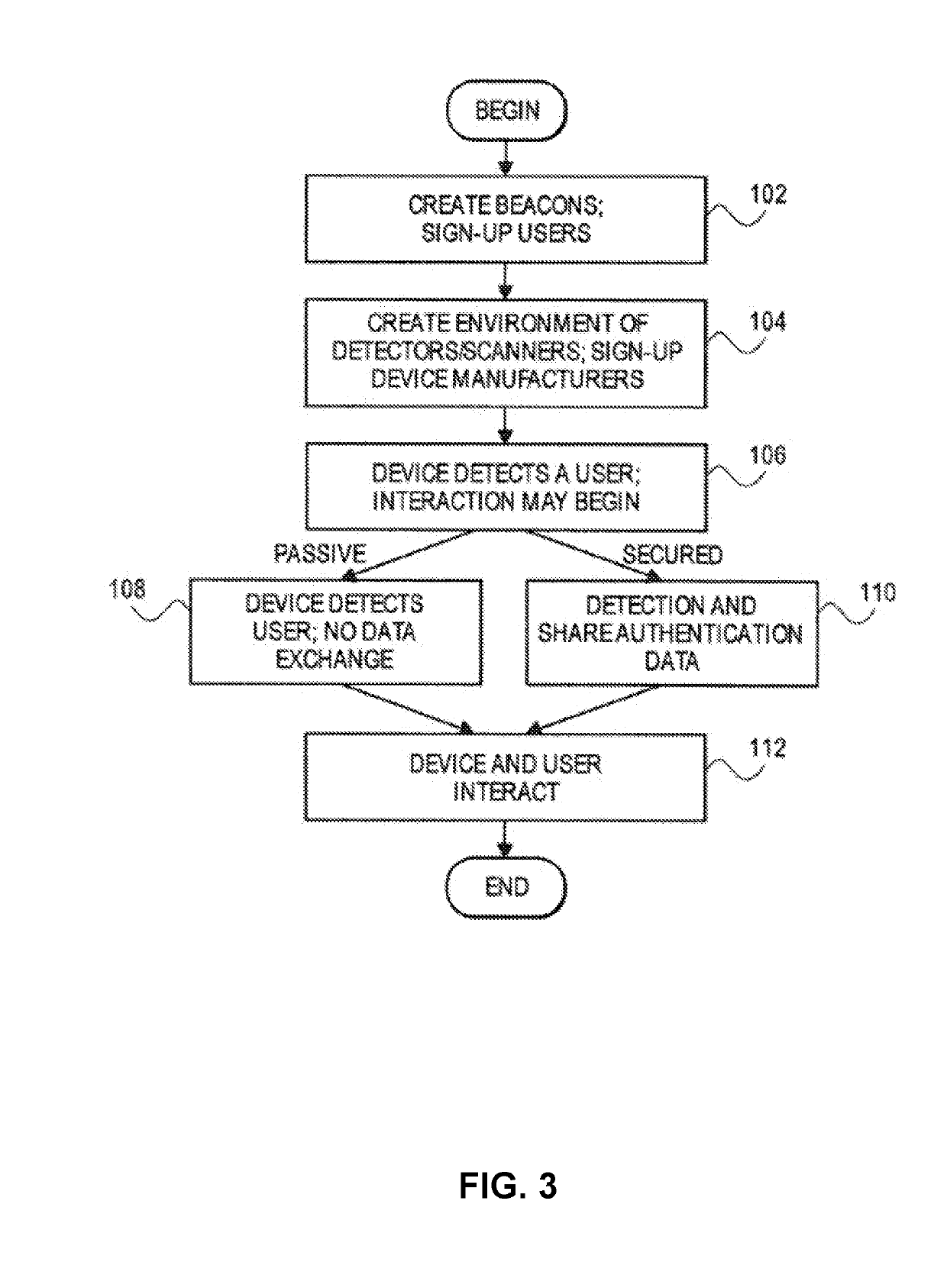Universal id system and methods and biometric information
a biometric information and universal identification technology, applied in the field of devices authentication, can solve the problems of no one to call to replace lost or stolen biometric information, single online personas that do not truly reflect how entities are, and many entities that are simply not worth the expense and maintenance of many entities
- Summary
- Abstract
- Description
- Claims
- Application Information
AI Technical Summary
Benefits of technology
Problems solved by technology
Method used
Image
Examples
example 1
[0071]FIG. 3 is an example of how an entity operates with the system 10. At step 102 an entity operates as a transmitter and moves around in a physical space. At step 104 an environment or space in which an electronic device operates is created. At step 106 the electronic device of a first entity detects a signal from system 10 in response to an initial interaction between the first entity electronic device and a second entity electronic device.
[0072]The initial interaction can be a passive interaction shown in step 108. Here the first party electronic device detects the presence of a signal. The device may not determine the identity of the entity, that is, the entity remains anonymous. In another passive mode embodiment, the entity may be identified but only in by back-end or the cloud and not on the electronic device itself. As a non-limiting example, the server may be accessible without a Network System connection or being online (e.g., via Ethernet, Zigbee, and the like). This p...
example 2
[0074]FIG. 4 illustrates a non-limiting example of a physical environment showing different types of electronic devices with signals. As a non-limiting example, the electronic device accesses back-end or the cloud with a server. As a non-limiting example, the server has numerous roles, such as authenticating the entity and maintaining access-control lists for signals and electronic devices.
example 3
[0075]FIG. 5 is a block diagram showing three components used for the Universal ID.
[0076]An electronic device 306 acts as the detector or scanner in the environment. As described, device 306 can take the form of one of a multitude of objects as previously disclosed. Nearly all have a software module 308. Software module 308, as well as module 304, performs many of the operations described in the flow diagrams below. In some embodiments, device 306 may also have a hardware component 310, such as a Bluetooth component or other hardware needed for connectivity with signal 302 or with a dedicated server, the other component in FIG. 5.
[0077]A server 312 may have extensive software modules, such as the universal signal app 316, and at least one database 314 which stores data on electronic device, entities, access control tables, and a wide variety of data needed to implement the universal signal environment of the present invention.
PUM
 Login to View More
Login to View More Abstract
Description
Claims
Application Information
 Login to View More
Login to View More - R&D
- Intellectual Property
- Life Sciences
- Materials
- Tech Scout
- Unparalleled Data Quality
- Higher Quality Content
- 60% Fewer Hallucinations
Browse by: Latest US Patents, China's latest patents, Technical Efficacy Thesaurus, Application Domain, Technology Topic, Popular Technical Reports.
© 2025 PatSnap. All rights reserved.Legal|Privacy policy|Modern Slavery Act Transparency Statement|Sitemap|About US| Contact US: help@patsnap.com



